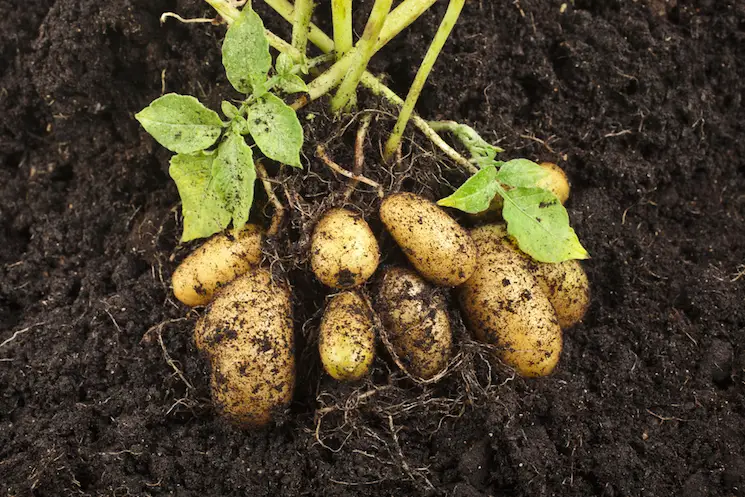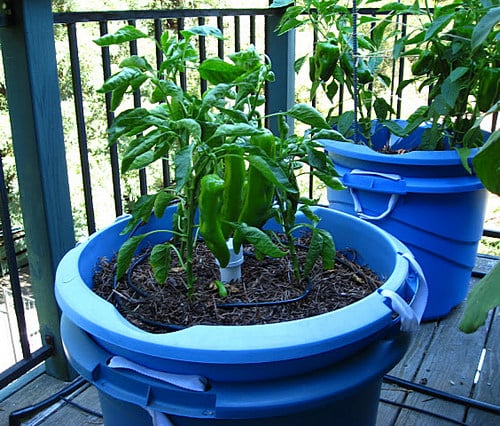Raised Bed Covers: Ultimate Plant Protection
Table of Contents
Benefits of Using Raised Bed Covers
Raised bed covers offer a multitude of benefits for gardeners looking to protect their plants and optimize growing conditions. One key advantage is the prevention of pest infestations, as covers act as a physical barrier against insects and critters that may harm crops. By shielding plants from unwanted visitors, raised bed covers contribute to healthier and higher-yielding harvests. Additionally, these covers help regulate temperature and moisture levels, creating a stable microclimate that promotes plant growth and resilience to environmental stressors.
Furthermore, raised bed covers can extend the growing season by providing insulation against cold temperatures and frost. This means that gardeners can start planting earlier in the spring and continue harvesting later into the fall, maximizing the productivity of their growing space. By harnessing the benefits of raised bed covers, gardeners can enjoy more successful and sustainable gardening practices while protecting their plants from external threats and harsh weather conditions.

Types of Raised Bed Covers
Raised bed covers come in various types to cater to different gardening needs. One popular type is the hoop cover, which consists of a series of hoops that support a protective covering over the raised bed. These covers are excellent for extending the growing season, protecting plants from harsh weather conditions, and warding off pests.

Another common type of raised bed cover is the frame cover, which features a sturdy frame that holds the cover in place. Frame covers are versatile and can be made from materials such as wood, PVC pipes, or metal. They provide excellent protection for plants while allowing for easy access and ventilation.

Materials Used for Raised Bed Covers
When it comes to choosing materials for raised bed covers, there are several options available to suit different needs and preferences. Some common materials used for raised bed covers include PVC pipe, plastic sheeting, metal hoops with row cover fabric, and wooden frames with mesh netting or plastic sheeting. Each material has its own advantages and considerations in terms of cost, durability, and effectiveness in protecting plants.
PVC pipe is a popular choice for raised bed covers because of its affordability and flexibility in creating different shapes and sizes of covers. Plastic sheeting is another cost-effective option that provides good protection against pests and harsh weather conditions. Metal hoops with row cover fabric are ideal for maintaining a controlled environment for plants while allowing sunlight and water to reach them. Wooden frames with mesh netting or plastic sheeting offer a sturdy and customizable solution for protecting plants from pests and adverse weather conditions.
Here’s a tabular breakdown of some common materials used for raised bed covers:
| Material | Description | Use Cases |
| 40% Sun Mesh Shade Cloth | Lightweight and UV-resistant mesh fabric. Provides partial shade and protection from intense sunlight. | Ideal for creating a shaded environment while allowing airflow. |
| Industrial Grade Clear PolyTarp | Transparent polyethylene tarp. Durable and waterproof. | Suitable for creating a greenhouse effect, extending the growing season, and protecting plants from frost. |
| Galvanized Hardware Cloth | Sturdy metal mesh with small openings. | Effective in keeping out pests like rodents and birds. Also provides some frost protection. |
| Knitted or Woven Cloth | Breathable fabric that allows air circulation. | Long-lasting and suitable for gardening. Can be used as a cover material for raised beds. |
Remember that the choice of material depends on your specific needs, climate, and the type of protection you require for your plants. Whether you opt for store-bought covers or create your own, these materials offer various benefits for safeguarding your garden beds
How to Choose the Right Size Raised Bed Cover
When selecting a raised bed cover for your garden, it is crucial to choose the right size to ensure optimal protection for your plants. To determine the appropriate dimensions, measure the length, width, and height of your raised bed. The cover should be large enough to fully enclose the bed without being too loose or too tight. Consider the growth potential of your plants and allow extra space for them to thrive under the cover.
Ensuring a proper fit for your raised bed cover is essential to maximize its benefits in protecting your plants from pests, harsh weather, and other environmental factors. Choosing a cover that is too small can restrict plant growth and airflow, while a cover that is too large may be cumbersome to secure and maintain. By accurately measuring your raised bed and selecting a cover that fits snugly, you can create a conducive environment for your plants to flourish.
When choosing the right size for your raised bed cover, consider the following factors:
| Factor | Consideration |
| Bed Dimensions | Measure the length and width of your raised bed. The cover should fit snugly over the entire bed. For optimal coverage, keep the bed dimensions in mind. |
| Plant Height | Consider the height of the plants you intend to grow. The cover should be tall enough to accommodate the plants without restricting their growth. If you’re growing tall crops like tomatoes or peppers, choose a taller cover. |
| Frame Material | Decide on the material for the frame. You have three basic choices: |
| – Wood: Common for raised garden beds. Options include: | |
| – Stakes: Drive stakes into the ground around the bed edges and lay a cover over them (use twine or wire to secure it). | |
| – Sticks: Cost-effective but may rot over time. | |
| – Plastic: Lightweight and long-lasting. Ideal for a flexible frame. | |
| – Metal: Sturdy and resistant to rot. Suitable for heavy-duty use. | |
| Cover Material | Next, choose the material for the cover. You have five basic options: |
| – Netting: Protects against pests like birds and insects. | |
| – Plastic: Provides insulation and extends the growing season. | |
| – Glass: Creates a greenhouse effect. | |
| – Mesh: Allows airflow while keeping pests out. | |
| – Row Covers: Lightweight fabric for frost protection. | |
| Cost | Consider your budget. Wood (such as cedar) tends to be more expensive, while plastic and some metals are more affordable. |
DIY Raised Bed Cover Ideas
When it comes to protecting your plants in raised bed gardens, DIY raised bed covers can be a cost-effective and personalized solution. One popular idea is creating a simple PVC pipe frame covered with lightweight fabric or mesh to shield plants from pests while still allowing sunlight and rain to nourish them. Another creative approach is repurposing old window frames or wooden pallets to construct a customized cover that fits your raised bed perfectly, offering protection against harsh weather conditions.
These DIY raised bed cover ideas not only add a touch of personal flair to your garden but also provide a practical way to safeguard your plants. By utilizing materials you may already have on hand or can easily acquire, you can create a customized cover that suits your garden’s specific needs and enhances the overall growing experience.

Benefits of Using Mesh Raised Bed Covers
Mesh raised bed covers offer a multitude of benefits for gardeners seeking to protect their plants and improve yields. The breathable nature of mesh covers allows for proper air circulation, creating a favorable microclimate for plants to thrive. Additionally, these covers serve as a barrier against pests like insects and birds, safeguarding crops from potential damage and infestations.
Furthermore, mesh covers provide protection from harsh weather conditions, such as strong winds and heavy rainfall, shielding delicate plants from potential harm. By extending the growing season and creating a stable environment for plants to flourish, mesh raised bed covers enable gardeners to achieve optimal growth and productivity in their gardens.
Benefits of Using Plastic Raised Bed Covers
Plastic raised bed covers offer a range of benefits that make them a popular choice for gardeners. Firstly, plastic covers provide excellent protection against pests such as insects and rodents that can damage plants. The non-porous nature of plastic also helps to retain moisture in the soil, reducing the frequency of watering plants. Additionally, plastic covers create a greenhouse effect by trapping heat, which can extend the growing season and help plants thrive in cooler temperatures.
Furthermore, plastic covers are durable and easy to clean, making them a low-maintenance option for gardeners. Their lightweight nature makes them simple to install and remove as needed, allowing for easy access to plants for watering and maintenance. Overall, plastic raised bed covers are a practical and effective solution for protecting plants and promoting healthy growth in the garden.
Benefits of Using Fabric Raised Bed Covers
Fabric raised bed covers offer several benefits for gardeners looking to protect their plants and extend the growing season. One key advantage is their ability to provide a physical barrier against pests such as insects, birds, and small animals that may otherwise damage or consume crops. This protection can help gardeners maintain the health and yield of their plants without the need for harmful chemical pesticides.
In addition to pest protection, fabric raised bed covers also offer a level of insulation that can help shield plants from harsh weather conditions. By creating a microclimate within the raised bed, these covers can prevent damage from frost, wind, heavy rain, or excessive heat, allowing plants to thrive in a more controlled environment. This can be especially beneficial for delicate or temperature-sensitive crops that require stable conditions to grow successfully.
How to Install Raised Bed Covers
To properly install raised bed covers, start by measuring the dimensions of your raised bed to ensure you select the right size cover. Place the cover over the bed, making sure it fits snugly without leaving any gaps where pests can enter. Secure the cover in place using clips, weights, or by burying the edges in the soil to prevent it from blowing away in the wind. It’s essential to regularly check the covers for any tears or damage and repair them promptly to maintain their effectiveness in protecting your plants.
After securing the cover, ensure it is properly ventilated to allow for air circulation and prevent overheating, especially during hot weather. Depending on the material of the cover, you may need to adjust the positioning or add additional support to prevent sagging and ensure proper coverage. Regularly monitor your plants to ensure they are thriving under the cover and make any necessary adjustments to the installation as needed. By following these steps, you can effectively install raised bed covers to protect your plants and optimize their growth.
Tips for Maintaining Raised Bed Covers
One key aspect of maintaining raised bed covers is regular cleaning and inspection. Make sure to remove any debris or dirt that may have accumulated on the cover. This will not only keep the cover in good condition but also prevent pests and diseases from thriving. Additionally, inspect the cover for any damages such as tears or holes. Repair these promptly to ensure the cover continues to provide effective protection for your plants.
Another important tip is to properly store the raised bed cover when not in use. If you plan to remove the cover during certain seasons, make sure to clean it thoroughly before storing it away. Store the cover in a dry and cool place to prevent mold and mildew growth. Proper storage will help extend the life of the cover and ensure it remains in good condition for future use.
Here are some tips for maintaining raised bed covers to ensure your garden thrives:
| Maintenance Tip | Description |
| Weed Control | Regularly remove weeds from around the raised bed. Weeds can compete with your plants for nutrients and water. |
| Clear Debris | Rake up dead plants, leaves, and other debris. A clean bed promotes healthy growth and prevents disease. |
| Compost or Mulch | Add a layer of compost or organic matter to replenish nutrients in the soil. Mulch helps retain moisture and suppress weeds. |
| Inspect Frame | Check the frame for any damage or signs of wear. Tighten screws or replace any broken parts. |
| Cover Material | Inspect the cover material for tears, holes, or deterioration. Repair or replace as needed. |
| Watering | Raised beds can dry out quickly. Regularly water your plants, especially during hot weather. Consider drip irrigation for efficiency. |
| Pest Management | Keep an eye out for pests. Use netting or row covers to protect plants from insects and birds. |
| Winterize | Before winter, cover the bed with mulch or a protective material to prevent soil erosion and weed seed germination. |
How Raised Bed Covers Protect Plants from Pests
Raised bed covers play a crucial role in safeguarding plants from harmful pests that can wreak havoc on your garden. By utilizing raised bed covers, you create a protective barrier that helps to deter insects, birds, rodents, and other pests from devouring your precious plants. These covers act as a shield, preventing pests from accessing your crops and causing damage, ultimately leading to a healthier and more bountiful harvest.
Furthermore, raised bed covers also aid in reducing the reliance on harmful pesticides and chemicals to combat pests. By implementing these covers, you can create a natural and sustainable pest management solution that minimizes the need for harsh chemicals that can harm both your plants and the environment. This eco-friendly approach not only protects your garden but also promotes a more balanced and resilient ecosystem within your growing space.
How Raised Bed Covers Protect Plants from Harsh Weather
Raised bed covers are essential for protecting plants from harsh weather conditions such as extreme temperatures, heavy rain, hail, and strong winds. These covers act as a shield, creating a microclimate that shields delicate plants from the damaging effects of inclement weather. By providing a barrier between the outside elements and the plants, raised bed covers help maintain a stable and conducive environment for optimal plant growth, ensuring the plants remain healthy and productive even in challenging weather conditions.
In addition to physical protection, raised bed covers also offer insulation that helps moderate temperature fluctuations, preserving warmth during cold spells and reducing heat stress during hot days. This insulation effect is especially beneficial for tender plants that are susceptible to frost damage or heat stress, allowing them to thrive by creating a more stable and favorable growing environment. By safeguarding plants from harsh weather, raised bed covers play a crucial role in promoting plant health and vitality, ultimately leading to higher yields and healthier crops.
How Raised Bed Covers Help Extend the Growing Season
Raised bed covers play a crucial role in extending the growing season for plants by creating a protective barrier against unfavorable weather conditions. These covers act as a shield, shielding plants from frost, wind, excessive heat, and heavy rain, allowing them to thrive in a controlled environment. By trapping heat and maintaining a stable microclimate around the plants, raised bed covers help to ensure optimal growing conditions, enabling gardeners to start planting earlier in the spring and continue harvesting later into the fall.
Moreover, the extended growing season provided by raised bed covers opens up new opportunities for growing a wider range of crops that may require longer periods of warmth and sunlight to mature fully. With the ability to control the temperature and moisture levels within the covered environment, gardeners can experiment with growing exotic plants or varieties that are not typically suited to their local climate. This versatility empowers gardeners to diversify their harvest and enjoy a bountiful yield throughout the year, enhancing the overall productivity and success of their gardening endeavors.
Common Mistakes to Avoid When Using Raised Bed Covers
When using raised bed covers, there are several common mistakes that gardeners should avoid to ensure the success of their growing efforts. One common mistake is not properly securing the covers in place, which can lead to them being blown away by strong winds or being accessed by pests. This can defeat the purpose of using raised bed covers to protect plants.
Another mistake to avoid is not regularly checking the covers for damage or wear and tear. Over time, covers can degrade due to exposure to the elements, leading to holes or tears that can compromise their effectiveness. By routinely inspecting and maintaining the raised bed covers, gardeners can ensure that their plants are adequately protected.
Here are some common mistakes to avoid when using raised bed covers:
| Mistake | Description |
| Not Planning to Plan | Skipping the thoughtful planning phase can lead to avoidable mistakes. Take the time to plan out your garden, considering factors like sun exposure, plant height, and drainage. Make planning a joy, not a chore. |
| Ignoring Raised Bed Location | Choosing the wrong spot for your raised bed can result in unexpected issues. Consider sunlight patterns, nearby trees, and potential shade. Avoid planting full-sun vegetables in a suddenly shady area! |
| Building Beds Too Wide | Wide beds can lead to soil compaction. You want to work in your garden without stepping on the soil. Healthy soil needs both water and air. |
| Neglecting Weed Barriers | Failing to use weed barriers allows weeds to invade your raised bed. Lay down landscape fabric or cardboard to prevent weed growth. |
| Not Planning for Watering | Raised beds can dry out quickly. Plan for efficient watering methods, such as drip irrigation or soaker hoses. |
| Using Chemical-Treated Materials | Avoid using chemically treated materials for building your raised bed. Opt for untreated wood or other safe materials. |
| Neglecting Nutrient-Rich Soil | Good soil is essential for healthy plants. Amend your raised bed with compost or well-balanced soil to provide necessary nutrients. |
| Skipping Mulching | Mulch helps retain moisture, suppress weeds, and regulate soil temperature. Don’t skip this step! |
| Ignoring Pest Management | Protect your plants from pests by using netting or row covers. Keep an eye out for invaders. |
| Forgetting Winterization | Prepare your raised bed for winter by covering it with mulch or protective material to prevent soil erosion and weed seed germination. |
Alternative Uses for Raised Bed Covers
When you think of raised bed covers, your mind may automatically go to their primary purpose of protecting plants in the garden. However, these versatile covers can serve a variety of alternative uses beyond plant protection. One creative way to utilize raised bed covers is to repurpose them as makeshift trellises for climbing plants such as cucumbers, peas, or beans. By providing structure and support for vertical growth, raised bed covers can help maximize garden space and promote healthy plant growth.
Another alternative use for raised bed covers is to create a mini greenhouse effect for seed starting or extending the growing season for sensitive plants. By enclosing the raised bed with a cover, you can trap heat and create a warmer microclimate that encourages seed germination and protects plants from unexpected frosts. This DIY greenhouse solution offers a cost-effective way to experiment with season extension techniques and nurture young plants in a controlled environment.
Where to Buy Quality Raised Bed Covers
When it comes to purchasing quality raised bed covers for your garden, there are several reputable options available both online and in-store. Many garden centers and nurseries offer a variety of raised bed covers, ensuring you can find the perfect fit for your gardening needs. Additionally, popular online retailers such as Amazon, Gardener’s Supply Company, and Home Depot also provide a wide selection of high-quality raised bed covers to choose from.
For those who prefer a more personalized touch, crafting your own raised bed covers can be a rewarding DIY project. Local hardware stores like Lowe’s or Home Depot typically carry the necessary materials such as PVC pipes, mesh, or plastic sheeting to create your custom cover. Online platforms like Etsy also offer a range of handmade raised bed covers crafted by skilled artisans, adding a unique and artistic flair to your garden setup.
To Know More About Raised Bed Covers, Watch This Video.
Can raised bed covers help protect plants from extreme temperatures?
Yes, raised bed covers can help protect plants from harsh weather conditions such as extreme heat or cold.
Do raised bed covers help to control pests in the garden?
Raised bed covers can act as a physical barrier to keep pests away from plants, helping to reduce the risk of damage or infestation.
Is it necessary to use different types of raised bed covers for different types of plants?
It is not necessary, but certain plants may benefit from specific types of raised bed covers depending on their needs, such as fabric covers for plants that require more airflow.
How long do raised bed covers typically last?
The lifespan of raised bed covers can vary depending on the quality of materials used and how well they are maintained, but they can typically last for several seasons with proper care.
Can raised bed covers help to extend the growing season for plants?
Yes, raised bed covers can help to create a warmer and more stable environment for plants, allowing them to be grown earlier in the spring or later into the fall.
Are there any environmentally friendly options for raised bed covers?
Yes, there are eco-friendly options such as using recycled materials for DIY raised bed covers or choosing covers made from sustainable materials like organic cotton or bamboo fabric.
Where can I find raised bed covers that are both high quality and affordable?
You can find quality raised bed covers at garden centers, online gardening stores, or specialty shops that specialize in gardening supplies. It’s also a good idea to read reviews and compare prices before making a purchase.






